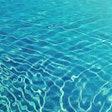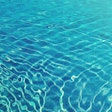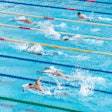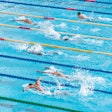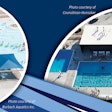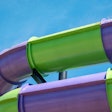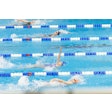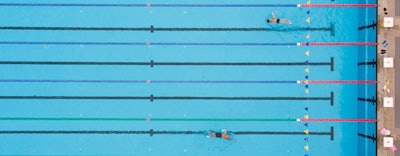
If any positives can emerge from a pandemic, one might be the further realization of just how important the athletics, fitness and recreation industries are to our collective physical and mental wellbeing. Most professionals were more than willing to shutter their storefronts and sacrifice entire playing seasons as the nation came to grips with COVID-19, but there's no denying the deep sense of loss inherent to that process — feelings exacerbated by the months of forced inactivity and isolation that followed.
It's no wonder the desire to get back to business is so strong.
Now comes the challenging work of reopening. With renewed commitment to customer service and care, industry leaders are re-examining the operational status quo like never before — and finding safer ways to deliver the most coveted of end products: good health.
These pages represent an overview of progress being made by organizations and individuals alike during this unpredictable period of transition in athletics, fitness and recreation.
—The Editors
While facilities of all types navigate reopening amid the COVID-19 pandemic, aquatics professionals are wrestling with their own unique set of challenges.
"One thing with aquatics is that it's all different all over the place," says Juliene Hefter, CEO of the Association of Aquatic Professionals. "Unfortunately, we're not just seeing a plan that is one plan for everybody to use. We see those CDC guidelines that everybody's been following and looking into and reviewing, and then there's been a lot of discussions on the state and national levels about how we can implement some of those things as we safely open our facilities."
RELATED: Colleges take phased approach to athletes’ return
While the CDC has generally been viewed as the authority for best practices related to reopening facilities of all types amid the COVID-19 pandemic, other organizations have also chimed in with advice. The American Red Cross, Starguard Elite and USA Swimming, to name a few, have offered webinars and documents aimed specifically at helping aquatics professionals in their reopening efforts. It's a lot of information to wade through, but each piece gets operators one step closer to a safe facility for their members and staff.
"One thing we say about aquatics professionals is that they're really used to reacting in emergency situations," Hefter says. "That's what we're trained for. So something like this, albeit very different, was something that aquatics really jumped on right away to get ahold of things and see what needed to be done."
Here's a look at some of the strategies aquatics facilities are implementing as they welcome swimmers back to the pool.
First in the countySteve Rhein, aquatics director for the Medina (Ohio) Recreation Center, and his colleagues have been plotting to reopen their facility since early April. As part of that effort, they tracked guidance from the CDC, local and state agencies, as well as watched hours of tutorials posted to YouTube and social media from facilities in states such as Oklahoma and Georgia, where stay-at-home orders were lifted earlier than in Ohio. At its June 1 reopening — what Rhein called a "trial run" — the Medina Rec Center capped the number of visitors at 100. After signing a waiver upon entry, members had access to everything from the cardio floor — which has been spread out in the facility's field house to allow for more distancing — to the aquatics center. No persons under the age of 16 were allowed in the facility. On the aquatics side, the center's indoor lap pool is open, but the outdoor pool is slated to reopen sometime later this summer. A maximum of 11 guests are allowed in the pool area at a time. One swimmer will be allowed per lane in the 25-meter, eight-lane lap pool, with three waiting spaces on the deck along one wall. "We're also closing all locker rooms and showers," Rhein says. "There's no tables, no chairs — everything's been cleared out. We've put away all our personal equipment, so no kickboards and that kind of thing." Rhein will be implementing a strict cleaning regimen every two hours, and the pool will have limited hours, closing at 6 p.m. on weekdays and 5 p.m. on weekends. Lifeguards won't be asked to wear a mask while they're in the chair for safety reasons. Another lifeguard will be responsible for greeting people at the doors and communicating the new policies and virus-mitigation measures. "We just don't know what to expect from the public," Rhein says. "They're listening, they're asking questions, but really they're just happy for what we've done and that we've been able to get things opened up for swimming again." |
The water is fine
According to the CDC, pool chemicals are six times the strength needed to kill COVID-19, and — for the most part — people aren't breathing on one another when they're in the water, especially if they're swimming laps.
"Most information that we're seeing is that if pool chemicals are kept at appropriate levels, the virus can't live in the water," says Hefter. "But our concern is not necessarily in the water, it's when people stand up in the water and now they're talking to somebody else."
RELATED: High Schools coordinate complicated reopening plans
The American Red Cross recommends free chlorine and bromine at acceptable levels as primary disinfectants to deactivate COVID-19. Free chlorine should be used at 2 parts per million to 4 ppm, with a maximum of 10 ppm. This would help ensure that all areas of circulating water in the swimming pool or spa are disinfected. Ideal levels of bromine range from 4 to 6 ppm, with a maximum of 8 ppm.
Cyanuric acid should not be used in spas or therapy pools at any time. If cyanuric acid is used in an outdoor swimming pool, the ideal range is 30 to 50 ppm, and the chlorine levels should be maintained at the higher end of the aforementioned range.
Testing of the disinfectant level and pH should be done on a frequent basis and in many different areas around the pool/spa to ensure adequate distribution of disinfectants. The ideal pH range would be 7.4 to 7.6 for proper disinfection rates.
RELATED: Fitness Clubs exceed reopening expectations
Lap swimming
Lap swimming is probably one of the easiest activities to implement, while also maintaining social distancing, as it can be scheduled and the number of people participating at one time can be capped. Hefter says she's heard from operators who are staggering people on either end of the lane, or are simply allowing one person per lane and scheduling those spots ahead of time.
"We've seen some creative facilities that are putting up some plastic partitions over the lane lines so when people are standing up at the end there's a barrier," Hefter says.
Lessons
If your facility is thinking about offering learn-to-swim classes, it might be appropriate to get parents involved, as instructors should teach from the deck.
"If you have swim lessons, we may see the younger children who can't swim in there with a parent," Hefter says. "So instead of doing parent/child up to age 3, we may be doing this up to age 5 or 6. We might actually see parents really excited about that because a lot of times we don't allow parents into the area, as kids can get distracted when parents are watching."
The instructor may want to remain on the deck for adult water exercise classes, as well, with participants spaced appropriately in the water. Any equipment used during classes should be sanitized after use, and participants should refrain from sharing things such as kickboards, weights, goggles or swim caps.
RELATED: Public Parks and Rec resumes serving diverse populations
Locker rooms and showers
Many aquatics facilities are refraining from opening locker rooms and showers for the time being. Swimmers are being asked to dress to swim and enter the facility through one door and exit through another. For those facilities that do plan on opening to visitors, the CDC recommends cleaning and disinfecting high-touch surfaces in these areas "at least daily."
Deck organization
Many facilities are doing away with unnecessary equipment, such as tables, bleachers and seating areas, in an effort to keep visitors from mingling in unsafe ways. Remaining seating and furniture on the deck should be configured for proper social distancing. Sufficient facilities for hand hygiene need to be provided, including soap, hand sanitizer with at least 60 percent alcohol (for staff and older children who can safely use hand sanitizer), paper towels, tissues and no-touch trash cans.
Deck signage is also important. The Red Cross recommends facilities provide "physical cues or guides (lane lines in the water or chairs and tables on the deck) and visual cues (tape or decals on the decks, floors or sidewalks) and signs to ensure that staff, patrons and swimmers stay at least 6 feet apart, especially for all areas where lines may form, such as entrances to facility and locker rooms."
RELATED: College Rec balances caution, desire to return
Lifeguards
Lifeguards are being handed new duties in reopening aquatics facilities. As recommended by the CDC, all patrons and staff at the facility should wear masks, but the general use of N95 masks during normal business operations is unnecessary. It should be recognized that visitors will need to lower masks when entering the water and when eating and drinking. Staff will also need to lower their masks for eating and drinking and any water activities, including rescues.
Lifeguards who are actively lifeguarding should not be expected to monitor guests' handwashing, use of cloth face coverings or social distancing. That task should be assigned to someone who can meet swimmers at the door and communicate safety expectations for the pool area.
The CDC also recommends designating a staff member to be responsible for responding to COVID-19 concerns. All staff should know who that person is and how to contact them.
Should a resuscitation be necessary, the American Red Cross cautions that there is no research on COVID-19 transmission during cardiac resuscitation, and concedes that there is a risk of transmission no matter what method is used. While there would be a risk of disease transmission when performing CPR on a person with COVID-19, compression-only CPR may be associated with a decreased risk of transmitting the virus compared to CPR with rescue breathing. In addition, placing a cloth face covering over the victim's face can further reduce the risk of virus transmission during CPR. While ventilations using a pocket mask with a one-way valve do provide protection compared to mouth-to-mouth ventilations, they still put the provider in close contact with the victim and do not facilitate the use of a HEPA filter. Bag valve mask ventilation is best delivered with two rescuers, but in the absence of a second rescuer a BVM can be used by one provider. It is also recommended that personnel in the resuscitation area is limited to essential staff.
RELATED: Reopening: Products
Training
Lifeguards were already in short supply, and closings due to the pandemic may have worsened that problem for operators, as many guards may have moved on to other jobs. In some cases, reopening outdoor facilities was an impossibility, as staffing requirements couldn't be met in time for a season that may last just three months in some parts of the country.
"We have to train staff prior to opening, and in the past that's been a lengthy process," Hefter explains. "Your interview process, your process of getting in the water and making sure they have the skills they need, and then taking it from there and actually doing your in-service training until you open. With social distancing, how are we doing that?
"You know, the CDC says wear masks. Well, masks are fine until you get in the water — and then they're saying don't wear masks in the water. Lifeguards can't just train by themselves, so we're seeing solutions that range from some virtual training, to maybe assigning everyone their own mannequin."
The American Red Cross recommends facilities optimize distance learning and limit class sizes. Additionally, current COVID-19-specific recertification updates should be reviewed to determine the need for courses and to determine which type of courses (live or virtual) will suffice. All participants in live training sessions should be prescreened upon arrival and use cloth face coverings when out of the water.
This article originally appeared in the July | August 2020 issue of Athletic Business with the title "Aquatics Centers test waters for reopening." Athletic Business is a free magazine for professionals in the athletic, fitness and recreation industry. Click here to subscribe.

























